
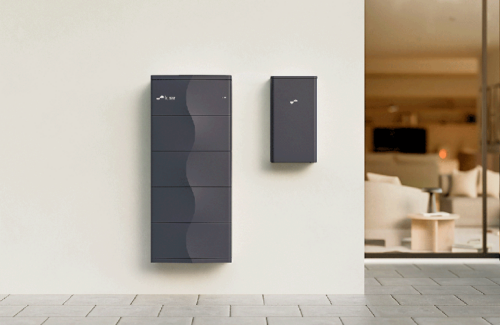
Intelligent power management company Eaton has announced a partnership with Lunar Energy to simplify installation and maximize the functionality of home energy storage and solar systems. The integration of Eaton's new AbleEdge intelligent circuit breaker with Lunar System will make it easier for installers and homeowners to deploy solar energy and storage, manage loads, optimize costs, and extend the lifespan of solar cell systems. These joint solutions are expected to be launched in early 2025, and Eaton will become Lunar Energy's preferred supplier of load management. Eaton's AbleEdge intelligent circuit breaker will add load management functionality to lunar systems in new construction and renovation projects. Eaton intelligent circuit breakers can be added to Lunar Bridge, any Eaton BR load center, or instrument circuit breakers. Homeowners and installers will be able to use Lunar's application to install, debug, and control the technology of both companies, simplifying installation and ongoing home energy management. Eaton's collaboration with Lunar Energy will simplify installation and maximize the functionality of home energy storage and solar systems. Paul Ryan, General Manager of Eaton's Connected Solutions and Electric Vehicle Charging, said, "Every household has unique energy needs and infrastructure, so we have created a modular and scalable home energy management ecosystem that is suitable for retrofitting and building new homes." "We are opening the door to more resilient, sustainable, and electrified homes, with technology that can be used with any solar and storage provider out of the box. Our collaboration with Lunar Energy will simplify solar and storage deployment, help homeowners maintain power supply in the event of grid disruptions, and reduce their carbon footprint This cooperation is in line with Eaton's "Home as a Grid" strategy, helping homeowners achieve energy transition. By creating a flexible power system that manages energy consumption in an integrated manner, Eaton's collaboration with leading energy storage suppliers such as Lunar Energy is changing the possibilities of household energy. When we founded Lunar Energy, we were committed to providing customers with simple and elegant clean energy solutions. For us, 'excellent design' refers to designing customized solar and battery systems for each household and providing an intuitive experience for every family member, "said Kunal Girotra, founder and CEO of Lunar Energy. Our modular battery system achieves this goal by adapting to households of all sizes. By adding Eaton's AbleEdge smart circuit breaker, we will provide an excellent solution that makes the transition to clean energy both simple and outstanding
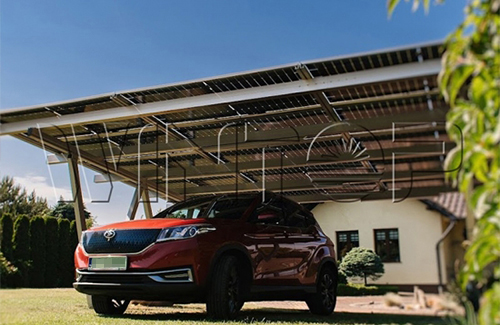
General Motors Energy has officially launched fixed energy storage products to all 50 states in the United States. GM Energy PowerBank offers 10.6 kWh and 17.7 kWh sizes, which can be paired with electric vehicle chargers or used separately. One of the core differences in General Motors Energy's product portfolio is its modularity, "said Wade Shaffer, Vice President of General Motors Energy. The flexibility of our energy management tools, combined with one of the largest vehicle to home electric vehicle series on the market, enables our customers to better control their energy usage, help mitigate the impact of power outages, integrate renewable energy options, and unleash additional value GM Energy PowerBank can be purchased as part of the GM Energy Home System bundle, which also includes the GM Energy PowerShift charger and GM Energy Vehicle to Home Support Kit. Customers who previously purchased the GM Energy V2H bundle only need to add GM Energy PowerBank. For customers who integrate solar power generation, GM Energy will recommend the preferred installer Qmerit for on-site evaluation, compatibility checks, and personalized pricing. Like existing GM Energy V2H products, GM Energy PowerBank and compatible solar systems will be accessible through GM branded mobile applications for seamless energy management.
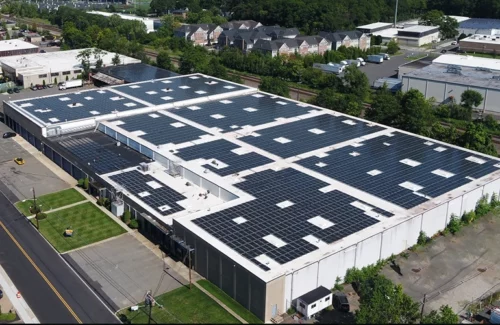
Wal Mart announced that it will invest in 74 Solar Landscape community solar projects in Maryland and Illinois. The commercial rooftop project is currently under construction and is expected to be electrified in 2024 and 2025. They will create nearly 43 megawatts of DC solar capacity for surrounding communities, enough to provide electricity for over 3600 households. About half of the product portfolio aims to reduce energy costs for low - and middle-income (LMI) households. Solar Landscape estimates that these projects will save subscribers approximately $1 million in energy costs annually. Frank Palladino, vice president of renewable energy strategy of Wal Mart, said, "Our investment in community solar energy portfolio is in line with our goal of helping people save money and live better." "Once put into operation, these projects will enhance the grid infrastructure of dozens of communities in Maryland and Illinois, expand access to affordable clean energy, and help thousands of families save energy costs." By placing community solar projects on commercial rooftops in densely populated areas (known as load zones) where it is difficult to generate new electricity using traditional methods, this investment portfolio will add significant value to the grid. This reduces the demand for additional power transmission, further promotes fairness in the transition to clean energy, and accelerates development. Clayton Avent, CFO of Solar Landscape, said: "Wal Mart's investment in community solar energy product portfolio is an important first step in our partnership, and also a catalyst for our mission to make solar energy more accessible and affordable nationwide." "Developing community solar projects on commercial roofs is the fastest and most effective way to save power for communities. We look forward to increasing the use of solar energy and saving money for residents around the portfolio project." Solar Landscape and Wal Mart plan to explore follow-up investment and opportunities to achieve the common goal of domestic community solar energy.
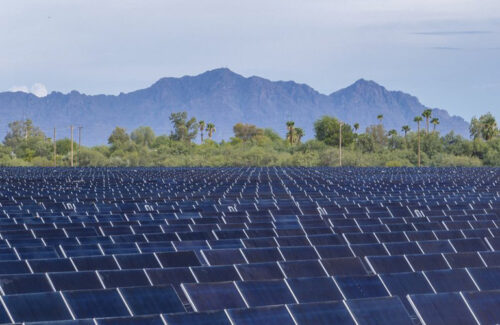
Ø rsted and Salt River Project (SRP) celebrate the official launch of the Eleven Mile Solar Center, a 300 MW solar project and 300 MW/1200 MWh battery storage system (BESS) in Pinar County. This project is part of Ø rsted's $20 billion investment to build energy generation projects in the United States. The Eleven Mile Solar Center is SRP's largest co built solar and BESS project, providing power to businesses, households, and Meta data centers located in Mesa, Arizona. David Hardy, Executive Vice President and CEO of Ø rsted Group in the Americas, said, "As electricity demand grows, the combination of solar energy and battery storage is crucial for reliable power delivery." "Due to the surge in data centers and the return of manufacturing to the United States, Arizona is one of the states with the highest electricity growth rates in the country. With our first project in Arizona now completed, we are pleased to be able to help meet the growing demand in the state and region through reliable domestic energy To celebrate the economic benefits brought by the project to the local community and the significant contribution of clean electricity to Arizona, Ø rsted held a celebration event at the O&M facility on 11 Mile, with American suppliers, SRPs, community members, and local and state elected officials in attendance. The Eleven Mile Solar Center is a significant investment in southern Arizona and a support for our state's growing energy demand, "said Lea Marquez Peterson, a corporate commissioner for Arizona. The eleven mile project demonstrates how clean energy can help us achieve resource diversification while ensuring the reliability of the local power grid With the addition of the 11 Mile project, SRP has nearly 3000 megawatts of carbon free energy (including over 1400 megawatts of solar energy) to serve its customers. SRP also has nearly 1300 megawatts of batteries and pumped storage facilities to support its power grid. SRP is striving to at least double the amount of power generation resources in its power system over the next 10 years to meet the growing energy demand in the Phoenix metropolitan area, while advancing the planned retirement of 1300 megawatts of coal resources. The energy and storage capacity provided by the eleven mile solar system plays an important role in helping achieve SRP's ambitious decarbonization goals while providing our customers with affordable and reliable energy, "said Bobby Olsen, Deputy General Manager and Chief Planning, Strategy, and Sustainability Executive, in recommending retail prices. We appreciate the collaboration with Ø rsted and Meta to bring more clean energy to our customers
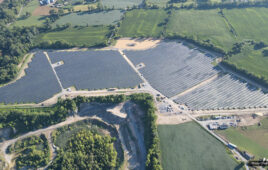
CEP Renewables, NJR Clean Energy Ventures, and CS Energy have completed a 19 MW DC Foul Rift solar project located in Whitetown, Warren County, New Jersey. The project is built on a severely damaged brownfield, which has been the location of composting facilities for nearly 30 years. Chris Ichter, Executive Vice President of CEP, stated, "This project demonstrates New Jersey's strong policy support for brownfield and landfill solar projects, as well as the power to develop grid connected solar power plants to repair environmental damage that would otherwise remain unresolved. We can leverage our previous experience in challenging brownfield and landfill solar projects to establish an effective public-private partnership with the town of White, which will have a positive impact on future generations Prior to its closure, the factory had received multiple environmental violations penalties from the New Jersey Department of Environmental Protection (NJDEP). When CEP first encountered the property, it had already been contaminated by the activities of composting facilities. An environmental survey has shown that soil is contaminated with metals, including polycyclic aromatic hydrocarbons and arsenic, and requires institutional control. The investigation found a total of 92 different environmental violation notices issued by NJDEP. In order to make the site comply with regulations, CEP cleared the remaining compost embankment and waste, and negotiated with NJDEP to sign a pre order administrative consent order to effectively address the remaining violations and terminate the solid waste permit. CEP has repaired the environmental damage on site, while also providing reliable clean energy, pollinator habitats, and more tax revenue for the local community. Similar to CEP's Mount Olive and BEMS landfill solar projects, the Foul Rift project was also obtained through redevelopment and tax lien redemption processes, a method unprecedented before the Mount Olive project. CEP has resolved the multi million dollar tax lien issue arising from the website's public-private partnership with the town of White, which involved CEP obtaining tax liens from the town, repaying all overdue taxes, and canceling the redemption rights of the property. CEP is now the owner of the site, and White Town has been able to recover approximately thirty years of interest and tax payments. The Foul Rift project not only turned an environmentally hazardous site into a revenue generating asset, but also helped New Jersey maintain its ranking as the state with the highest solar installed capacity per square mile in the United States.
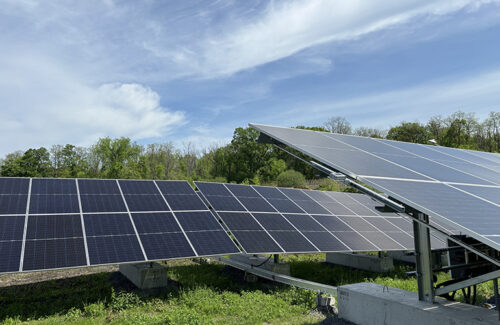
In 2021, the New Mexico legislature passed Senate Bill 84, establishing the state's community solar program. The bill, initiated by Senator Elizabeth "Liz" Stefanics (D-Bernalillo), authorizes the construction of 200 MW community solar projects, enough to power 38000 households. The legislation also grants the Public Regulatory Commission (PRC) the power and directive to approve additional project capacity, which will take effect on November 1, 2024. In October, the People's Republic of China did just that, expanding the project by an additional 300 megawatts - enough to power an additional 57000 households. In addition, China has approved genuine self certification to confirm the eligibility of low-income users, simplify their participation, and make it easier for more households to benefit from clean energy. The following is a statement from Kevin Cray, Senior Director of Xishan at the Community Solar Access Alliance (CCSA): CCSA and its community solar champions in New Mexico are very excited about China's decision to approve this additional capacity. With this expansion, New Mexico is now in a better position to provide clean, local, renewable energy to more residents and receive additional federal incentives under the IRA. This decision not only strengthens New Mexico's energy network, but also creates a more equitable system that gives more communities the opportunity to access clean energy while saving on electricity bills. In the committee's discussion, they emphasized the need to maintain the momentum of the plan to fully unleash its potential. We look forward to continuing to work with partners in the state to ensure the rapid deployment of additional community solar power capacity and benefit those who need it most
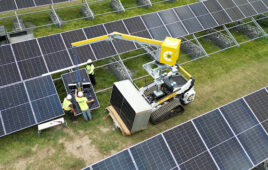
CrewMate is a semi-automatic lifting assist vehicle developed by Moog Construction Company. It recently completed on-site testing near Niagara Falls in New York, demonstrating the machine's ability to assist solar field workers in installing photovoltaic panels. Montante Solar, headquartered in Buffalo, and Moog Construction carefully planned on-site experiments at a solar field on top of a closed landfill site. It has been proven that the undulating and steep terrain effectively tests the vehicle's leveling system as well as its ability to climb and maneuver with workers. In the on-site experiment, CrewMate repeatedly transported trays, with each tray carrying up to 31 large photovoltaic panels measuring 93.9 x 51.3 inches, while closely tracking workers and using the machine's lifting assistance device to pick up each 83 pound tray. Guide the panel onto the solar module rack on site. CrewMate tracks the installation personnel between solar racks until the photovoltaic panels on the tray are cleared, while maintaining a safe distance from workers and objects. Steven Erck, Vice President of Montante Solar, said, "We believe that CrewMate is an innovation that can safely increase productivity and help meet the needs of new solar power plants and workers." "The photovoltaic panel in this on-site test was one of the largest and heaviest installed by the staff; CrewMate reduces the pressure of installation work typically carried out in high temperature and remote areas CrewMate is a 'collaborative robot' that enhances the way solar workers handle work; it increases the amount of work that workers can complete, "said Aditya Sharma, Business Development Manager for Strategic Opportunities at Mug Construction Company Within minutes of introducing CrewMate, solar workers learned how to operate its fixtures to pick up and move solar panels. CrewMate can also reduce panel damage and eliminate injuries, sprains, and strains caused by repeatedly lifting and moving photovoltaic panels. This autumn, CrewMate will participate in a larger pilot project to help build solar power plants at new locations.

This year marks the 75th anniversary of the founding of the People's Republic of China, and as the nation celebrates its National Day, it welcomes a splendid era and together builds towards the great Chinese Dream. The Chinese people, bathed in the brilliance of this moment, are collectively writing a glorious chapter in the grand rejuvenation of the Chinese nation. From the initial challenges and arduous struggles during the early days of the nation's establishment to the present era of prosperity and dynamism, China has witnessed a remarkable 75 years. The National Day has become a symbol of unity and determination for the Chinese nation, and reflects the confidence and pride of the Chinese people. During this year's National Day celebrations, a solemn flag-raising ceremony took place at Tiananmen Square in the capital city of Beijing. The fluttering of the Five-star Red Flag symbolizes the rise and prosperity of the Chinese nation. Throughout the National Day holiday period, people from all walks of life step out of their homes, guided by their love for the nation, to participate in a series of vibrant and colorful celebrations. Grand park events, artistic performances, and spectacular light shows held across the country have captivated people's attention. Gathering together, people celebrate National Day, bask in the prosperity and strength of their motherland. Additionally, the nation pays tribute to its heroes and role models, expressing gratitude and respect for the hardworking individuals from various sectors. Various forms of celebratory activities, such as military parades and mass parades, have been organized during the National Day. Through these events, people can witness firsthand the might and achievements of their motherland, experiencing a sense of pride and excitement as Chinese citizens.
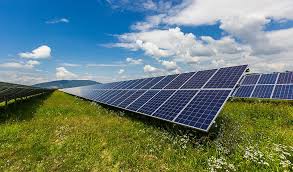
Through the Net Zero Buyers Alliance (NZCB) of the Sustainable Development Roundtable, Akamai Technologies, Teradyne, and Wayfair have signed a consolidated virtual power purchase agreement (VPPA) with BayWa re Americas for renewable energy credits generated from the 135 MW AC Prairie Solar project in Champaign County, Illinois, developed by BayWa re Americas Group and expected to be commercially operational by the end of 2025. Prairie Solar will have a significant impact on the Independent System Operator (MISO) region in central Illinois, where the proportion of low-carbon energy will only be 32% by 2023, making it a carbon intensive power grid. Once put into operation, Prairie Solar will help reduce carbon emissions in the region, which currently heavily relies on fossil fuels. By consolidating demand, Akamai, Teradyne, and Wayfair have overcome the challenge of moderate energy load, which typically hinders independent procurement of renewable energy at the utility scale. This buyer aggregation method led by NZCB makes the acquisition of financial and environmental benefits of renewable energy on a utility scale more democratic, enabling a wider range of enterprises to engage in procurement. We are proud to be part of the second aggregated virtual power purchase agreement in North America, "said Anna Vinogradova, Head of Sustainability and ESG at Wayfair." This project will help Wayfair achieve Scope 1 and Scope 2 emissions reduction targets, in line with our vision for a more sustainable future. Partners like NZCB leverage collaboration to unleash ambitious opportunities for businesses and contribute to a cleaner environment
Categories
New Products
Tin Roof Rapid Solar Mounting System with Hanger Bolt Read More
Residential Small Solar Easy Bracket Kit for Home Balcony Read More
Automatic Single Pile Solar Tracker with 10 PV Panels Read More
Angle Adjustable Aluminum Easy Solar Panel Bracket for Garden Read More
Intelligent Single Post Dual Row Solar Tracking System Read More
5000ES Solar Off-Grid Energy Storage Inverter Supplier Read More
Multi Drive Double-Sided Single Axis Tracker System Read More
© Copyright: 2025 Xiamen Wintop New Energy Tech Co., Ltd.. All Rights Reserved.

IPv6 network supported
Friendly Links:
Integrated Solar System